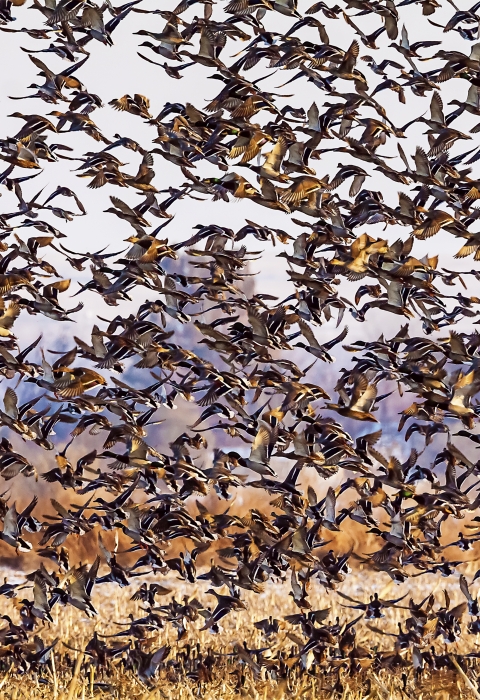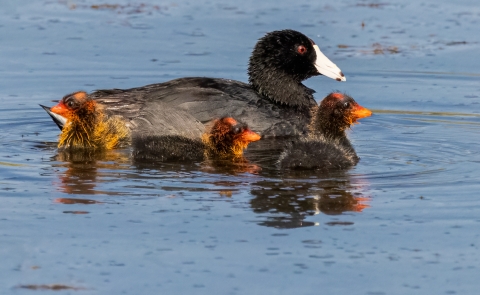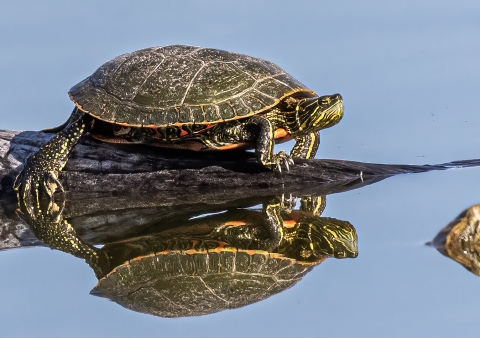Visit Us
Whether you come for an hour or a day, to hunt or to watch wildlife, to see the smallest song bird or photograph the biggest buck, Umatilla National Wildlife Refuge has something for everyone. But this isn't a city park, and visitors need to know a few things before they come.
The refuge is open from sunrise to sunset, except for hunting, which has special hours from 1-1/2 hours before legal hunting time to 1-1/2 hours after. To protect nesting birds and wintering waterfowl, most refuge islands are closed to public entry year round.
Location and Contact Information
About Us
Established in 1969 as mitigation for habitat lost through flooding from the construction of the John Day Dam, the wetlands of Umatilla provide an oasis for waterfowl, especially in the winter.
Providing waterfowl habitat is a major focus of the refuge, but many other species call the place home throughout the year. Spring and fall migration are exciting times to visit the refuge. In the spring, many species come to nest, including burrowing owls and long-billed curlews. Many species of songbirds can be seen and heard within the wetlands—marsh wrens, yellow-headed blackbirds, red-winged blackbirds and white pelicans arrive with the spring and linger on into the summer season. Summers are warm here, frequently reaching temperatures of over 100 degrees, causing many wildlife species to quietly spend their days hiding out waiting for cooler morning and evening temperatures.
The refuge shines brightest in the winter as thousands of waterfowl make their return, spending the winter foraging, resting and preparing for the upcoming nesting season. The sharp calls of Canada geese can be heard reverberating on the crisp winter air, with the quack of mallards and the whistle of a pintail blending in.
What We Do
With consideration given to the entire range of habitat needs for waterfowl, Umatilla National Wildlife Refuge is designed and managed to provide the maximum benefit for these migratory birds. To provide more for wildlife, FWS staff uses a variety of carefully chosen habitat management techniques to maintain, recover, or enhance habitat. Management practices are used to mimic and/or enhance natural processes, such as flooding and fire. Techniques, such as water level manipulation, mowing and burning, are used on the refuge. Battling the spread of invasive plants is never ending, and we use a variety of techniques to combat weeds.
Get Involved
From its start in 1903, the National Wildlife Refuge System has owed its very existence to concerned citizens eager to protect America's natural resources. More than 200 nonprofit Refuge Friends organizations support national wildlife refuges, whether they work with a single refuge, a refuge complex or an entire state. Friends members are crucial to conserving and protecting our nation’s wildlife and teaching millions of Americans that their actions today determine the conservation legacy of tomorrow. More than 42,000 people volunteer their time and ideas each year to the U.S. Fish and Wildlife Service. Whether they work on the land, in a visitor center or with youth, they contribute to the conservation mission that reaches back more than a century. Become a volunteer or Refuge Friend to contribute your strength on behalf of America’s natural resources.


